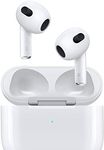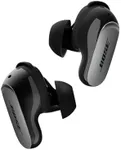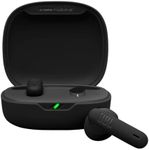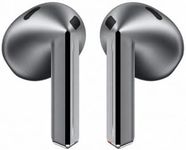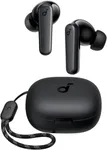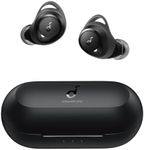Buying Guide for the Best Wireless Earbuds
Choosing the right wireless earbuds can make a big difference in your daily life, whether you use them for music, calls, workouts, or just casual listening. The market offers a wide range of options, so it's important to focus on the features that matter most to you. Think about how and where you'll use your earbuds most often, and let your lifestyle guide your decision. Understanding the key specifications will help you find a pair that fits your needs and ensures a satisfying listening experience.Battery LifeBattery life refers to how long the earbuds can play audio before needing to be recharged. This is important because it determines how long you can use them on a single charge, which is especially relevant if you travel, commute, or use them for long periods. Earbuds typically offer anywhere from 3 to 12 hours of playback per charge, with the charging case providing additional charges. If you use your earbuds for short periods, lower battery life may be fine, but for long listening sessions or travel, look for models with longer battery life and a case that can recharge them multiple times.
Sound QualitySound quality describes how clear, balanced, and rich the audio is when you listen to music or calls. This is important because it affects your overall enjoyment and how well you can hear details in your audio. Sound quality can vary from basic to premium, with some earbuds focusing on strong bass, clear vocals, or balanced sound. If you are an audiophile or love music, prioritize earbuds known for high sound quality. For casual listening or podcasts, basic sound quality may be sufficient.
Fit and ComfortFit and comfort refer to how well the earbuds sit in your ears and how comfortable they feel during use. This is crucial because uncomfortable earbuds can cause pain or fall out easily, especially during movement. Earbuds come in different shapes and often include various ear tip sizes. If you plan to use them for workouts or long periods, look for options with customizable tips or ergonomic designs. Try to match the fit to your ear shape and intended use for the best experience.
Noise CancellationNoise cancellation is a feature that reduces unwanted background sounds, making it easier to focus on your audio. This is important if you use your earbuds in noisy environments like public transport, offices, or gyms. There are two main types: active noise cancellation (ANC), which uses technology to block noise, and passive noise isolation, which relies on the earbud's shape and fit. If you need to block out a lot of noise, look for ANC. If you just want some quiet, passive isolation may be enough.
Water and Sweat ResistanceWater and sweat resistance indicates how well the earbuds can handle moisture, which is important for workouts, running, or use in rainy conditions. This is usually rated by an IP (Ingress Protection) rating, such as IPX4, IPX5, or higher. Lower ratings protect against light splashes, while higher ratings can handle more water exposure. If you plan to use your earbuds for exercise or outdoors, choose a model with a higher water resistance rating.
Controls and FeaturesControls and features refer to how you interact with your earbuds, such as touch controls, buttons, voice assistants, or app support. This is important for convenience, allowing you to change tracks, adjust volume, or answer calls without reaching for your phone. Some earbuds offer simple tap controls, while others have advanced features like customizable settings or voice commands. Think about how much control you want directly from your earbuds and choose accordingly.
Connectivity and CompatibilityConnectivity and compatibility describe how the earbuds connect to your devices and whether they work well with your phone, tablet, or computer. Most wireless earbuds use Bluetooth, but the version can affect connection stability and range. Some earbuds offer features like multipoint pairing, letting you connect to more than one device at a time. Make sure the earbuds are compatible with your main devices and consider advanced connectivity features if you switch between devices often.
Call QualityCall quality refers to how clearly your voice is transmitted during phone or video calls. This is important if you use your earbuds for work calls or talking to friends. Good call quality depends on the number and quality of microphones and noise reduction technology. If calls are a priority, look for earbuds with multiple microphones and features that reduce background noise for clearer conversations.
